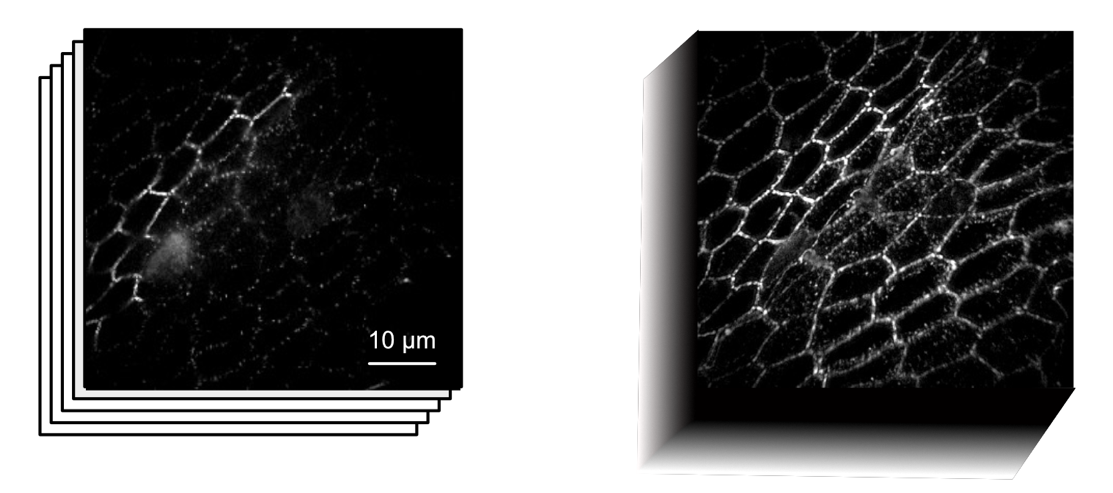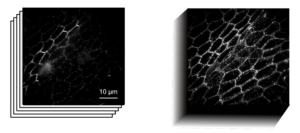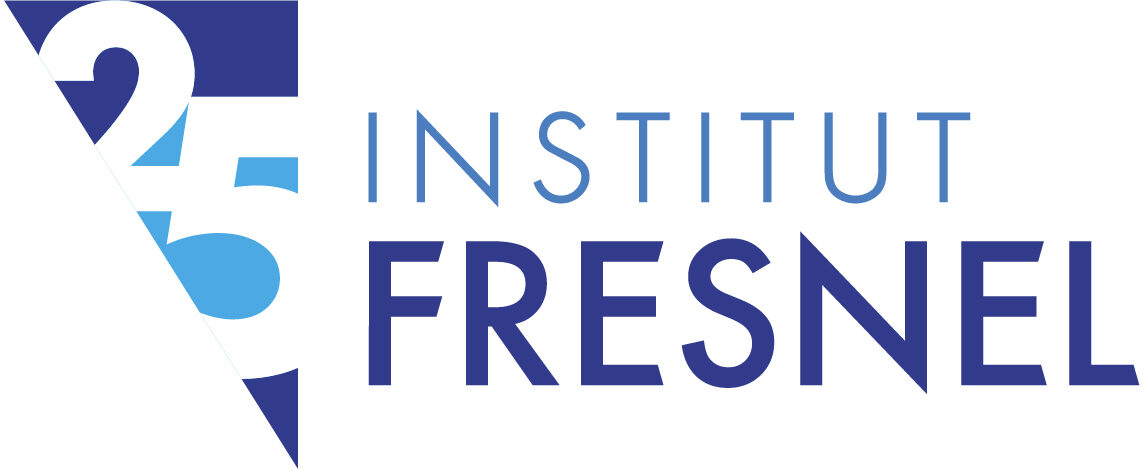
Abstract : The ultimate aim of fluorescence microscopy is to achieve high-resolution imaging of increasingly larger biological samples. Extended depth of field presents a potential solution to accelerate imaging of large samples when compression of information along the optical axis is not detrimental to the interpretation of images. We have implemented an extended depth of field (EDF) approach in a random illumination microscope (RIM). RIM uses multiple speckled illuminations and variance data processing to double the resolution. It is particularly adapted to the imaging of thick samples as it does not require the knowledge of illumination patterns. We demonstrate highly-resolved projective images of biological tissues and cells. Compared to a sequential scan of the imaged volume with conventional 2D-RIM, EDF-RIM allows an order of magnitude improvement in speed and light dose reduction, with comparable resolution. As the axial information is lost in an EDF modality, we propose a method to retrieve the sample topography for samples that are organized in cell sheets.
Reference : Mazzella, L., Mangeat, T., Giroussens, G. et al. Extended-depth of field random illumination microscopy, EDF-RIM, provides super-resolved projective imaging. Light Sci Appl 13, 285 (2024). https://doi.org/10.1038/s41377-024-01612-0

Contexte : Ce travail est l’objet d’une collaboration entre l’Institut Fresnel, le Turing Center for Living Systems et le Centre de Biologie Intégrative. Ce travail bénéficie aussi d’interactions fortes avec le Laboratoire des Sciences du Numérique à Nantes (LS2N), avec CNRS Sciences Informatiques et avec la société RIMéo, en cours de création par Simon Labouesse, ancien doctorant de notre laboratoire.
Financement : Agence Nationale de la Recherche, Institut Carnot Star (3D-RIM), plan d’investissement « France 2030 » (ANR-16-CONV-0001, ANR-21-ESRE-0002) et Aix-Marseille Université – A*MIDEX.
Contacts : Loïc LE GOFF, équipe MOSAIC

